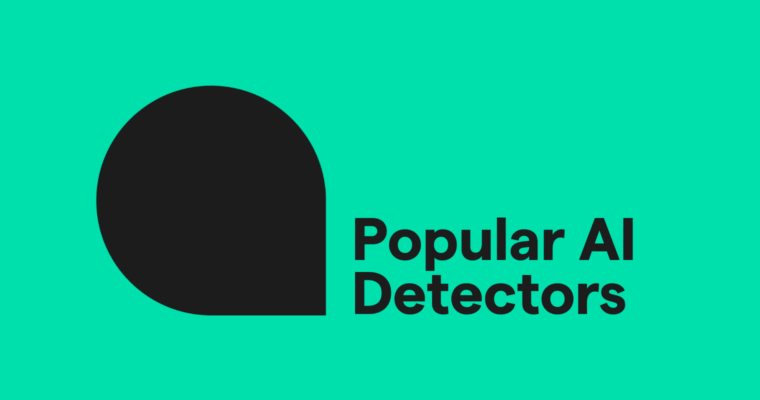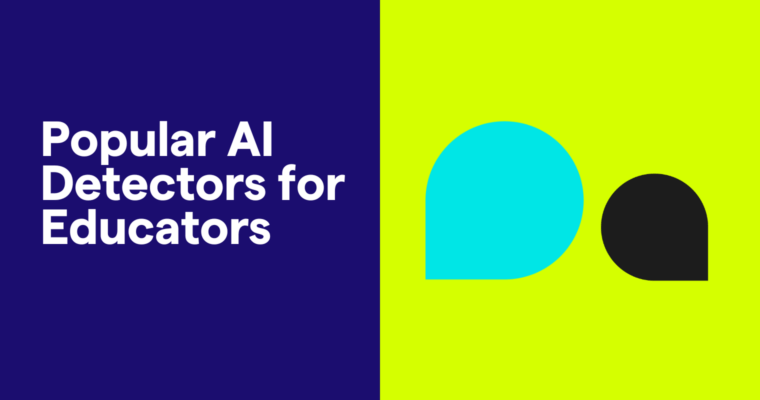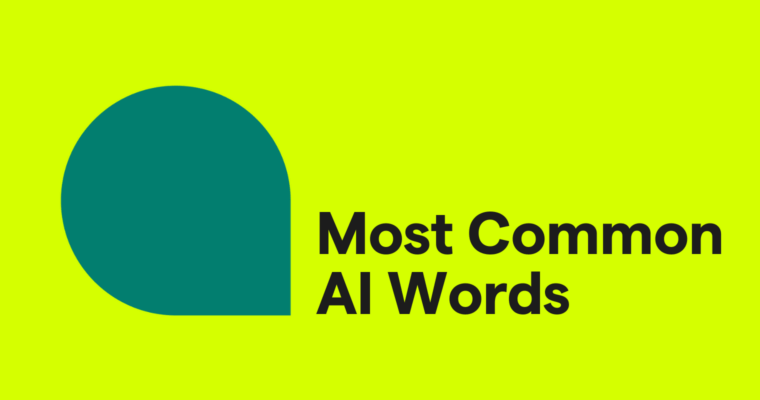
ChatGPT proved the usefulness of AI to the general public with its humanlike chats and user-friendly design, highlighting AI’s transformative potential.
While ChatGPT is a leading name in generative AI, there’s a whole array of gen AI tools out there for both personal and professional use, and each offer unique benefits. From general-purpose platforms like ChatGPT to specialized ones like Grammarly for writing assistance, the market is full of alternatives.
Exploring different ChatGPT competitors can give you an idea of their pros and cons, helping you find the right AI tool for your needs.
How to choose the best ChatGPT alternative
What’s the best alternative to ChatGPT? That depends on several factors, such as your use case, budget, privacy and security concerns, and desired integrations.
Here’s what you need to consider and some questions you should ask as you explore your options.
Use cases
If you plan to use AI to generate content:
- What is the purpose of your content (to entertain, inform, sell, etc.)?
- Will your prompts be text based, or do you want to add files and images?
- Do you want to use generative AI to create summaries and reports based on existing data?
If you plan to use AI for coding:
- What programming languages do you prefer?
- Do you want real-time code suggestions and completions?
- What is your experience level?
If you plan to use AI for research:
- How up-to-date do you need the information to be?
- Will you be using it to satisfy personal curiosity or for tasks requiring high accuracy, like academic research?
- How complex are your questions? Are they focused on a specific niche?
- Do you want to be able to search the web?
If you’re interested in image generation:
- Are you planning to use AI to edit existing images?
- Do you want to create images, text, and/or code in the same platform?
- How much control do you want over image size and style?
Access, customizability, and integrations
- Where do you want to interact with the platform (on the web, in a mobile app, or inside existing applications)?
- How much do you want to customize your experience?
- Do you want the platform to adapt to your style and learn your preferences?
- Do you want generative AI to be able to retrieve data from other applications, like emails and documents?
Privacy, security, and ethical concerns
- How concerned are you about the way generative AI is trained?
- How do you feel about your personal data being used for training?
- How much do you want to know about how the AI model prevents harmful, toxic responses?
Exploring popular ChatGPT alternatives
Once you know which factors to consider when choosing the best generative AI platform, you can start experimenting. Here’s an overview of alternative generative AI platforms to try. These platforms can engage in conversation, generate text and images, write code, and help you use your existing tech more efficiently.
Claude AI
Claude AI is an AI system accessible via web / app-based chat and API that can perform many of the same tasks as ChatGPT. It’s made by Anthropic, an AI development firm with a mission to create reliable, interpretable, steerable AI systems. What sets Claude apart from other AI systems is that it was trained to follow a set of ethical and behavioral principles, referred to as its constitution. The goal of this approach, called constitutional AI, is to encourage honest, helpful, and harmless responses. Currently, there are three versions of Claude: Claude 3 Haiku (fastest for daily tasks), Claude 3 Opus (for more complex tasks), and Claude 3.5 Sonnet (the most intelligent model). Claude has a knowledge cutoff of April 2024.
Use cases
- Engaging in natural conversation to help with customer service, problem-solving, research, and planning
- Summarizing large volumes of information in a format that is easy to read or with highlights of key points for specific audiences
- Writing original content like fiction, business memos, or outlines for marketing campaigns
- Describing and analyzing images
- Writing and optimizing code
- Accessing and interacting with external APIs and tools to perform complex tasks
Pricing
- Free: Claude 3.5 Sonnet access
- $20 a month: Access to all models, higher usage limits than free version, priority bandwidth
- $30 per person per month: Access to all models, with centralized billing and administration for team management
Pros
- Offers more transparency around how AI is trained to reduce harm and prevent misinformation
- Offers a 200k token context window, allowing the system to maintain accuracy and relevance with long prompts and responses
- Can process complex information quickly, making it valuable for customer service and multistep processes
- Capable of interacting with external tools and APIs to manipulate data, output dynamic responses based on data, and perform complex tasks
Cons
- Can’t generate images; can only analyze them
- Can’t access links or web content directly
Google Gemini
Google Gemini is an AI system accessible via web and app-based chat and API that can generate and analyze images, code, and written content. It can also search the web and interact with various Google apps. Gemini offers three versions: Flash (optimized for speed and efficiency), Pro (for general performance across a wide range of tasks), and Ultra (the largest model, suited for complex tasks).
Use cases
- Generating text content like emails, image captions, creative works, and proposals
- Analyzing images to describe what’s pictured or to inspire content creation
- Writing and translating code
- Searching the internet and Google apps and services
- Summarizing existing content and information contained in Google apps, such as emails or spreadsheet data
Pricing
Google offers free and paid versions of Gemini, with the premium version starting at $20 per month.
Pros
- Can access real-time information via Google search and Google apps like Flights and Maps
- Offers a double-check feature so you can validate the accuracy of its responses
- Multimodal capabilities, performing several tasks within one platform
Cons
- Caters more toward research than creative content creation
Perplexity
Perplexity is a conversational, multimodal AI-powered search engine. It combines different generative AI systems like ChatGPT and Claude along with web crawlers to help you find real-time information from vetted sources. Perplexity also has context awareness, so users can ask follow-up questions that are interpreted in the original context.
Use cases
- Searching the internet for up-to-the-minute information, like news and weather
- Researching information within specific domains, such as scientific journals
- Generating images based on search results
- Answering questions about math equations and concepts
- Generating written content informed by real-time search results
Pricing
You can access Perplexity for free or with a premium subscription for $20 a month.
Pros
- Allows you to customize your experience by steering the platform to focus on specific tasks or research topics
- Streamlines web searches by providing you with the content of the results, so you don’t have to click on links to find what you need
- Provides easy access to sources so you can verify information
- The Library feature can be used to organize research threads and collections.
- The Copilot feature provides a guided Al search experience, allowing you to explore topics in-depth and learn new things.
- The Focus feature allows you to search specific sites, like Reddit or YouTube.
- The Writing Mode feature allows for responses generated by large language models (LLMs) without web searches.
Cons
- Can’t fully replace search engines, especially for location-based queries
- May inaccurately summarize source data
- May not be as good at conversational dialogue as other platforms
Grammarly
Grammarly leverages 15 years of in-house linguistic expertise and an ensemble of AI models (like GPTs) to help you generate new content ideas and improve your writing over time. From composing emails to sales proposals, Grammarly helps with ideation, drafting, and revisions. Grammarly is accessible via a web-based editor or API.
Use cases
- Summarizing existing content so it’s easy to read and share with others
- Drafting emails, letters, marketing communications, and reports
- Rewriting existing content so it fits your desired length and level of formality
- Brainstorming ideas and creating project briefs
Pricing
Grammarly offers free and paid plans. Additionally, Grammarly provides specialized enterprise pricing and pricing for educational institutions.
Pros
- Works across more than 500,000 apps, so you don’t have to switch between programs
- Provides suggestions based on your style, tone, voice, and audience
- Suggests prompts based on your content and your application so you can work more efficiently
Cons
- Primarily focused on writing, so it’s not optimized for having conversations or performing online research
- Gives you only 100 prompts per month to generate text with the free version
- Doesn’t allow for file uploads
Microsoft Copilot
Microsoft Copilot is a multimodal AI assistant. It works with Microsoft 365 applications and Bing and is available on macOS, iOS, Android, and Windows 10 and 11.
Use cases
- Generating content for personal communications, marketing campaigns, and creative projects
- Creating original images for advertising, illustrations for books, presentation decks, or education
- Assisting with tasks like planning a vacation or creating meal plans
- Writing, explaining, and improving code
- Streamlining tasks within Microsoft 365 apps
Pricing
You can access Microsoft Copilot for free using the web-based chat, the mobile app, in the Microsoft Edge sidebar, and as a Windows app. Microsoft also offers Copilot Pro, which costs $20 per month.
Pros
- Allows you to use AI to work within and across Microsoft apps more efficiently
- Leverages Bing to search the web
- Allows you to create images, text, and code in a single platform
Cons
- Can make it easier to accidentally expose company data
GitHub Copilot
GitHub Copilot is an AI coding assistant. It works inside your integrated development environment (IDE) and on the command line to complete or write snippets of code.
Use cases
- Writing and autocompleting code
- Finding and suggesting fixes for bugs
- Optimizing code for efficiency and clarity
- Answering questions about code and programming concepts
Pricing
GitHub Copilot is available through three premium tiers: Individual, Business, and Enterprise. If you’d like to try it for free, GitHub Copilot offers a free 30-day trial.
Pros
- Works inside your IDE, so you don’t have to move between different programs
- Has a large community of users who provide each other with tips and help improve the platform
- Saves time on repetitive, manual coding tasks
Cons
- Performs best with languages that are well-represented in public repositories
- Responses can be inaccurate or fail to reflect your intent
- May expose sensitive information or vulnerabilities
Amazon Q Developer
Amazon Q Developer (formerly CodeWhisperer) provides AI-generated code recommendations to help you program more efficiently.
Use cases
- Providing code completion suggestions based on your input
- Identifying security issues in your code
- Suggesting unit tests
- Answering questions about Amazon Web Services (AWS) capabilities, available resources, billing, and more
- Documenting code
Pricing
Individual users can access Amazon CodeWhisperer for free. For professional users, licenses are paid through their company’s AWS account.
Pros
- Provides inline code suggestions in IDEs, the command line, and the AWS console
- Generates code recommendations in real time—no need for back-and-forth prompts and responses
- Tailors recommendations for AWS-specific coding and infrastructure
Cons
Q Developer may not be ideal for general purpose coding since it caters to developers making Amazon-related apps and APIs.
Midjourney
Depending on which version of ChatGPT you use, you may have access to DALL-E, OpenAI’s image generation platform. Midjourney is an alternative to DALL-E that allows you to create and edit images using natural language prompts.
Use cases
- Brainstorming and visualizing ideas for marketing campaigns, business branding, and creative projects
- Illustrating books, graphic novels, and comics
- Designing layers and background elements for game development
- Creating concept art for product ideas
- Generating visual aids to use in educational settings
Pricing
To access Midjourney, you’ll need to sign up for one of four subscription plans, which start at $10 per month.
Pros
- Good at creating unique, highly stylized images
- Part of an existing community of artists sharing ideas on Discord
- Ability to create tuners to customize the style of your images
Cons
- Images and prompts are uploaded to the member library unless you activate Stealth Mode.
- Available only through paid subscriptions
- Available only inside of Discord
Which ChatGPT alternative is best for you?
ChatGPT is a highly flexible and capable generative AI tool, but it shouldn’t be the only one that you use. You may miss out on other platforms that better suit your needs and preferences. Navigate responsible AI use with Grammarly’s AI checker, trained to identify AI-generated text.
The best thing you can do is experiment with generative AI. Fortunately, you can test-drive many platforms for free. Find the options that are most convenient to use, work best for your applications, align with your personal values, and offer the customizations you need.
Whether you settle on ChatGPT, another tool, or a combination of platforms, keep an open mind to reap the full potential of generative AI.







